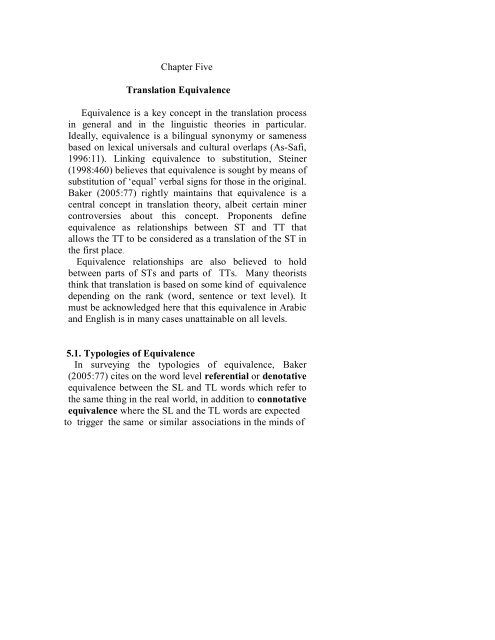424_2061_A.B.
424_2061_A.B.
424_2061_A.B.
- No tags were found...
You also want an ePaper? Increase the reach of your titles
YUMPU automatically turns print PDFs into web optimized ePapers that Google loves.
Chapter FiveTranslation EquivalenceEquivalence is a key concept in the translation processin general and in the linguistic theories in particular.Ideally, equivalence is a bilingual synonymy or samenessbased on lexical universals and cultural overlaps (As-Safi,1996:11). Linking equivalence to substitution, Steiner(1998:460) believes that equivalence is sought by means ofsubstitution of ‘equal’ verbal signs for those in the original.Baker (2005:77) rightly maintains that equivalence is acentral concept in translation theory, albeit certain minercontroversies about this concept. Proponents defineequivalence as relationships between ST and TT thatallows the TT to be considered as a translation of the ST inthe first place.Equivalence relationships are also believed to holdbetween parts of STs and parts of TTs. Many theoriststhink that translation is based on some kind of equivalencedepending on the rank (word, sentence or text level). Itmust be acknowledged here that this equivalence in Arabicand English is in many cases unattainable on all levels.5.1. Typologies of EquivalenceIn surveying the typologies of equivalence, Baker(2005:77) cites on the word level referential or denotativeequivalence between the SL and TL words which refer tothe same thing in the real world, in addition to connotativeequivalence where the SL and the TL words are expectedto trigger the same or similar associations in the minds of66
















